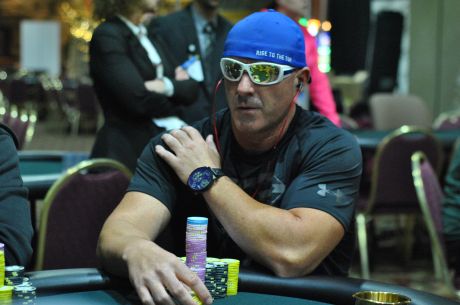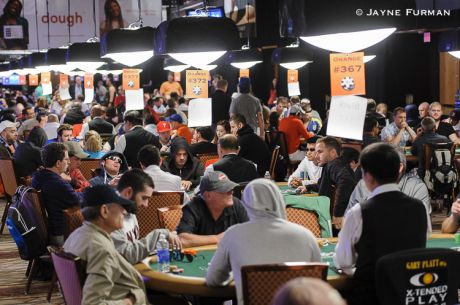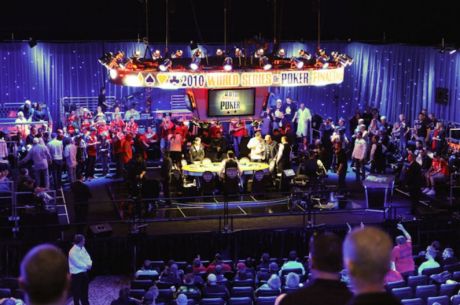The Second-Guessing Game: Key Decisions from WSOP Main Events (2007-2014), Pt. 2
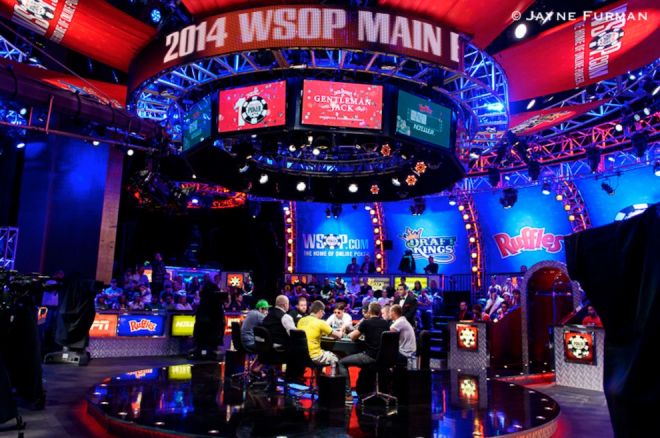
The 2015 World Series of Main Event begins this Sunday at noon, reminding us of the excitement and intense pressure poker��s most prestigious tournament can bring.
Yesterday we singled out some especially intriguing hands from near the end of the 2007-2010 WSOP Main Events to examine. Today we conclude our look back, choosing one hand from each of the last four Main Events to revisit and reconsider the difficult decisions made by the players involved.
Do you remember these hands? What did you think of them? Feel free in the comments to share your thoughts about some or all of them.
2011: Martin Staszko vs. Pius Heinz
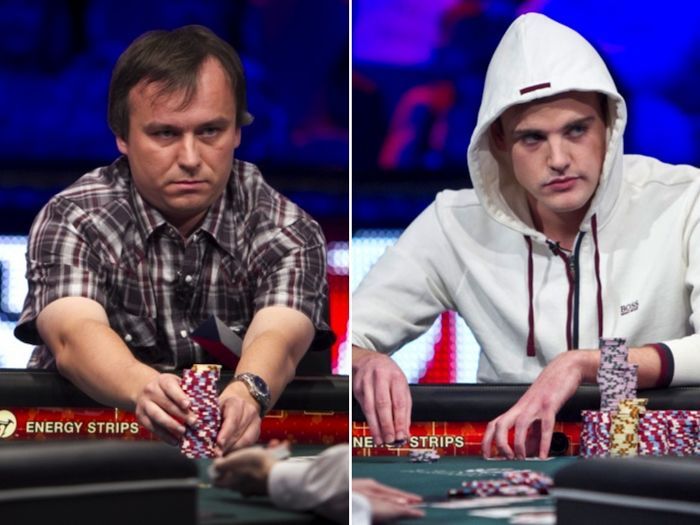
In 2011, the ��November Nine�� played from nine players down to three the first night, then Pius Heinz (with 107.8 million), Ben Lamb (with 55.4 million), and Martin Staszko (with 42.7 million) returned for the final day of play.
The very first hand that night saw Lamb raising 2.5x to 3 million from the small blind, Staszko three-betting to 7.5 million from the big blind, Lamb thinking a bit before shoving, and Staszko calling all in. Lamb had K?J? and Staszko 7?7?, the sevens held, and a crippled Lamb was knocked out in third just three hands later.
That hand could well be a good one for second-guessing, but a later one during heads-up play also stood out as memorable.
The blinds were up to 800K/1.6M with a 200K ante, and Heinz was ahead with nearly 125 million to Staszko��s 81 million. Staszko raised to 3.5 million from the button with K?Q?, and when Heinz three-bet to 10.1 million with J?9?, Staszko called.
The flop came 7?2?10?, and after a full minute Heinz led for 9.8 million. Staszko called the bet, then the turn brought the A?. After another lengthy pause, Heinz bet 21.3 million (just over half the pot), and after only 15 seconds or so Staszko announced he was all in. Heinz immediately folded, and suddenly Staszko had the chip lead.
The pair would battle another 90 hands with Heinz eventually winning, but what do you think of the duo��s decisions in this hand featuring several bold bets with neither player holding a pair?
2012: Andras Koroknai vs. Greg Merson
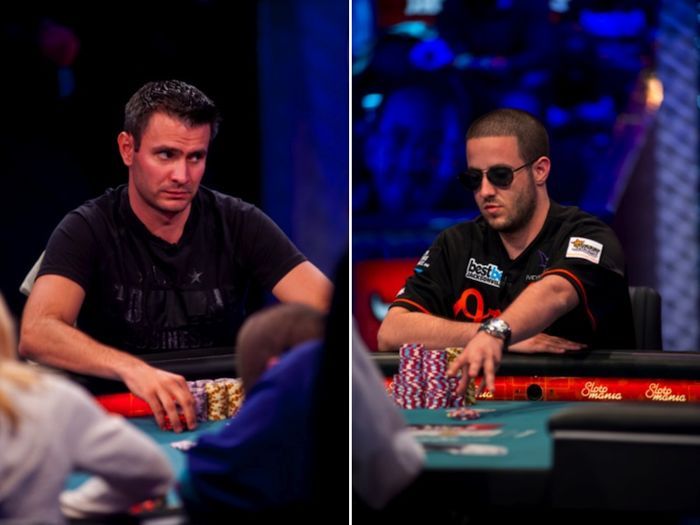
The 2012 WSOP Main Event final table is likely best remembered for the lengthy three-handed battle between eventual winner Greg Merson, runner-up finisher Jesse Sylvia, and Jake Balsiger. It took that trio 264 hands (!) to find a winner, with all three demonstrating high-level poker throughout their marathon.
Meanwhile, a hand from the previous evening with six players left between Andras Koroknai and Merson �� Hand #109 of the final table �� provided those following the action a lot to discuss as play wound down that night.
The blinds were 250K/500K with a 50K ante. Sylvia was leading with 54.175 million, Merson was second with 42.1 million, and Koroknai was in third position with 41.2 million.
It folded to Merson on the button who raised the minimum to 1 million, then Sylvia three-bet to 2.6 million from the small blind. Koroknai then chose to reraise to 5.3 million from the big blind. That prompted Merson to reraise again to 9.2 million total, enough to chase Sylvia.
Koroknai then pushed all in �� a six-bet shove �� and Merson called right away. Merson had A?K?, while Koroknai had but K?Q?. The board rolled out eight-high, Koroknai was abruptly knocked out in sixth, and Merson was the new leader by a wide margin with five left.
When looking back at Koroknai��s play, it��s worth considering Sylvia��s participation in the hand. It may or may not be relevant, but about one hour earlier in Hand #85 there was a very similar sequence that saw Merson make a button-raise to 1 million, Sylvia three-bet to 2.6 million from the SB, then Koroknai four-bet to 4.85 million from BB with A?4?. Merson folded, then Sylvia five-bet to force Koroknai to fold.
Those of us viewing the hand on a delay on ESPN2 that night saw Sylvia had made that move with Q?J? �� something Koroknai could have known, too, by the time of the later hand.
2013: JC Tran vs. Jay Farber
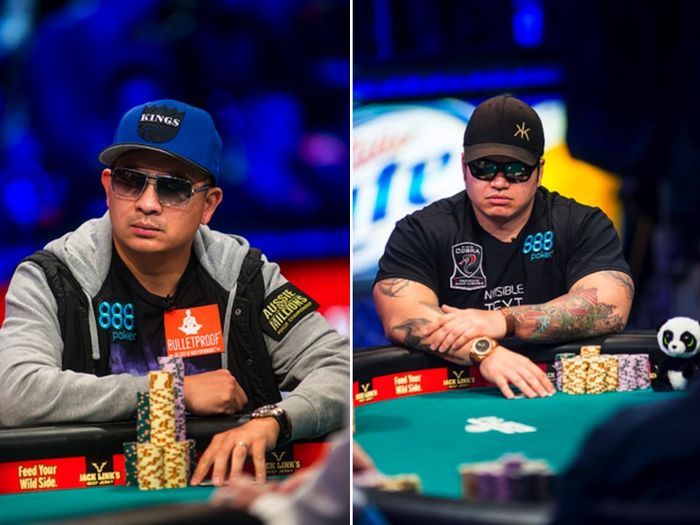
The first few hours of the 2013 WSOP Main Event final table saw players making a number of impressive folds. David Benefield made a couple of them, in fact.
In one (Hand #10), Benefield (then the table��s short stack) folded pocket sevens versus eventual winner Ryan Riess��s pocket eights on a 5?4?5?5? board. Three hands later Benefield folded 10?10? before the flop after Michel Brummelhuis four-bet shoved with A?A?.
Benefield would last a while longer to finish eighth, then later in the evening came another interesting fold in a hand between JC Tran and Jay Farber.
It was the last hand of Level 37 (300K/600K/75K) and there were six players left. Riess was in front with 68.175 million, Farber was next with 60.8 million, and Tran in a distant third with 21.175 million.
Action folded to Tran in the small blind who looked down at A?Q?, then raised to 1.4 million. Farber, dealt 6?6? in the big blind, made it 3.1 million to go. Tran then four-bet to 6.4 million total, and after a long think Farber reraised again to 10 million.
Tran spent some time in the tank, then let his hand go to preserve the 14.7 million he had left. A couple of hours later Tran would be eliminated in fifth, while Farber would make it to heads-up against Riess to finish second.
2014: Mark Newhouse vs. William Tonking
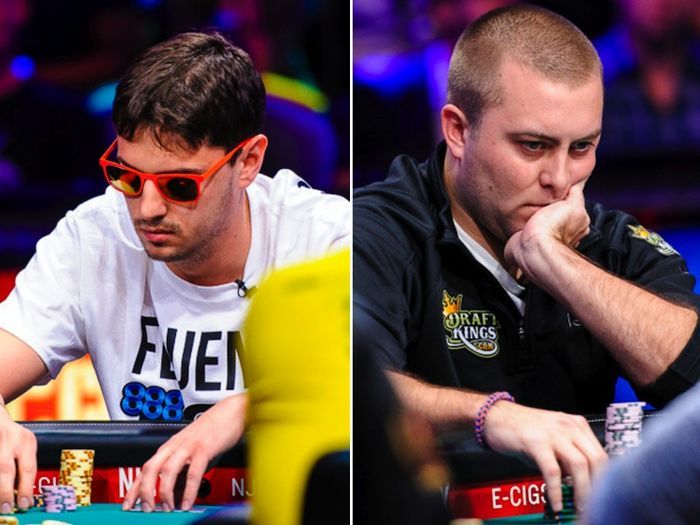
A year ago Martin Jacobson started the final table in eighth position out of the final nine, and after sitting tight for the first couple of hours would find himself all in an amazing 19 times before eventually winning the bracelet and $10 million first prize.
Just before the first of those all-ins by Jacobson came the first elimination of the final table when Mark Newhouse was knocked out �� amazingly finishing in ninth for a second straight year �� in a hand versus William Tonking.
Newhouse had begun the final table in fourth position among the final nine with 26 million, while Tonking started in sixth with just over 15 million. Both were still in the middle of the pack when the following hand took place, with Tonking having chipped up into fourth with 24.5 million, a bit more than Newhouse who had 22 million.
The blinds were 250K/500K with a 50K ante, and then chip leader Jorryt van Hoof raised to 1.1 million from the hijack seat with 8?7?. Newhouse was next to act in the cutoff, and having been dealt 10?10? elected to call the raise. Tonking meanwhile picked up Q?Q? in the small blind and he reraised to 3.75 million, earning a fold from van Hoof and a call from Newhouse.
The flop came 2?4?J?. Tonking bet 3.5 million, and Newhouse called. The turn was the 4?, and after tanking a while Tonking checked. Newhouse took that opening to bet 4.5 million, and Tonking called.
There was about 25.5 million in the middle when the river brought the J?. Tonking checked once more, and about 10 seconds later Newhouse pushed all in with his last 10.2 million. Tonking thought about it for about 45 seconds, then found a call to win the pot and knock out Newhouse. Tonking grabbed the chip lead briefly with that pot before ultimately finishing in fourth.
��If it wasn��t the Main Event, I was gonna snap,�� Tonking could be heard telling his rail after the hand.
Such a statement underscores what a huge mental test the latter stages of the WSOP Main Event can be, providing a truly unique set of circumstances to challenge players when making their decisions.
Want to stay atop all the latest in the poker world? If so, make sure to get PokerNews updates on your social media outlets. Follow us on Twitter and find us on both Facebook and Google+!

